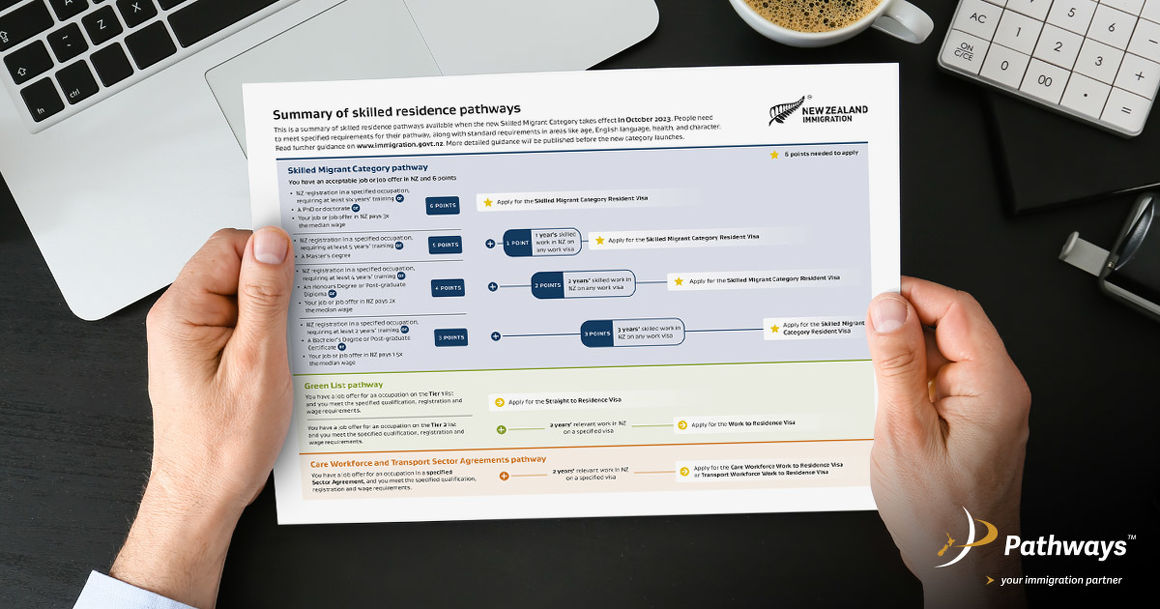Ready to begin your immigration journey?
Let’s get started by planning the first steps together now.Meet Our Team

Obtaining residence is the main motivating factor for migrants to relocate from around the world to New Zealand and the SMC has historically been the main pathway for migrants to obtain New Zealand residence. The current SMC requires applicants to score a total of 180 points under a range of criteria based on their job, work experience, qualifications, age etc. - but this is all about to change!
From 9 October the revised SMC will require a total of just 6 points which will comprise points for either vocational registration, or recognised qualifications (minimum bachelor degree), or remuneration - and points for up to 3 years of New Zealand skilled work experience. Applicants must have (or have an offer of) skilled employment with an Immigration NZ accredited employer, be aged 55 years or younger, meet the required English standard, and be of good health and character. The assessment of whether the employment is skilled is based on the payrate (which must be at least the median pay – currently $29.66ph), the job tasks, and whether an applicant is suitably qualified to work in the role.
Some examples of how a person can achieve the 6 points to be eligible for SMC residence:
• Architect – vocational registration = 6 points
• Electrician – vocation registration (3 points) + 3 years of NZ work experience (3 points) = 6 points
• Lecturer – master degree (5 points) + 1 year of NZ work experience (1 point) = 6 points
• Marketing manager – high salary ($88.98ph = 3 x median wage) = 6 points
• Crane operator – salary 2 x median wage ($59.32ph) (4 points) + 2 years of NZ work experience (2 points) = 6 points
• HR coordinator – salary 1.5x median wage ($44.49ph) (3 points) + 3 years of NZ work experience (3 points) = 6 points
It is envisaged the majority of applicants will need at least some NZ work experience to achieve the 6 point threshold.
The bottom line is that for many workers (eg; bakers, hairdressers, metal fabricators, welders, retail and hospitality workers etc) their only option is to have 3 years of qualifying NZ work experience and for their current job (or job offer) to be paid at, or above, the 1.5x median wage threshold (currently $44.49ph). Because this wage threshold is clearly above the market rate for many of the above roles these workers cannot qualify for SMC residence.
The existing SMC (180 point) policy will remain in place until the final Expression of Interest selection draw on 16 August, and applicants should urgently assess their eligibility under this category before it closes.
Other residence pathways remain available if the role is on the Green List Straight-to Residence or Work-to-Residence lists, or under the Care Workforce and Transport Sector pathways to residence.
In another change the Government has announced that the Accredited Employer Work Visa term, currently 3 years, will be extended to 5 years from November 2023. This will be welcome news to many employers who will now be able to plan ahead with more certainty. However, the situation remains that if the worker is not eligible for residence during this time, they must leave New Zealand for at least 1 year before being eligible to apply for another AEWV. Existing AEWV holders will be able to extend their work visas to a total duration of 5 years.
The SMC changes will achieve their objective of simplifying this residence pathway. However, the reality is that for many migrant workers, and many in skill shortage roles, the fact that they no longer have a viable path to residence must influence their initial decision to come to NZ, and also what job roles they focus on. As always with immigration changes there will always be winners & losers (ask any Minister of Immigration!)
Meet Our Team
We use cookies on our website to provide you with the best experience. If you would like to know more about our privacy policy, take a look at our Privacy Notice
 10 Aug 2023
10 Aug 2023